
Well Mannered Dog | Charleston Dog Trainer | Charleston Dog Training
Pleasure to Meet You
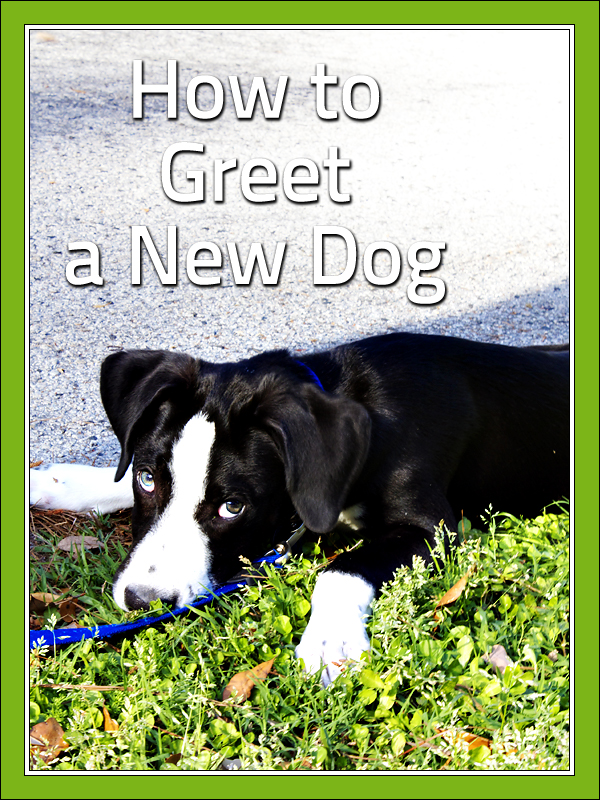
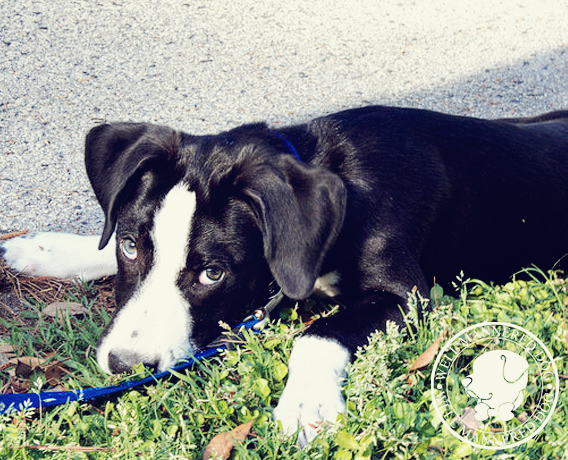
Do you know the proper way to greet a cute new dog?
As a dog trainer, I frequently get asked what the proper way is to greet a dog. Here are some tips to help you have a healthy and happy experience by understanding the appropriate way to approach a new dog:
- Always ask an owner for permission to touch their dog prior to petting. Ask if the dog is friendly. Some dogs are not welcoming to guests. Some owners do not like their dog to interact with others. You do not want to risk your personal safety or reward them for a behavior their owner dislikes.
- Watch a dog’s body language. If their hair stands up, if they stop moving or wagging their tail, if they hold their breath, if they crouch down to the ground, or if they begin barking or lunging, simply do not touch them. They may be nervous, insecure or unsure and are better left alone.
- The tail is deceiving. Never judge a dog by its tail. A wagging tail is not always a happy sign. It is better to watch a dog’s eyes or ears or overall body posture.
- Never run up to a stray dog and pet them. You do not know how this dog responds to people, if the dog is injured, or if the dog is otherwise aggressive. It is best to let the dog approach you, if you decide to interact at all.
- Let them hear and smell you prior to interacting with them directly. Stand still and put your hand out for the dog to smell. Let them get comfortable with your scents and sounds prior to actual touching.
- Do not approach the dog face-to-face. Rather, position yourself beside the dog. A face-to-face meeting can become a threat to a dog that you do not mean to make.
- Do not touch the dog if you are nervous. The dog will know and it will make them nervous as well. There is no reason to pet a dog if you do not feel comfortable.
- Do not pet a dog on the head when you first meet them. A shoulder or back pet is more appropriate. Many dogs get nervous and/or upset when they are pet on top of their heads, or when people reach over their heads to pet them.
- Do not stare a dog in the eye. While this is a show of confidence in the human world, it is a show of confrontation in the canine world. Gently look at the dogs ears, face, or chest, but try to avoid direct eye contact.
- If you become uncomfortable or are being attacked by a dog you have just met NEVER turn your back and run away. The dog will chase you. It will think you are playing a game or have become prey. Instead, remain calm, stand still until the dog goes away, guard your body with any personal items (purse, umbrella, briefcase, etc.) that you have with you.
- Do not flail your arms, scream, throw personal items, or wave your fingers at a dog. Excitement and nervousness begets excitement and nervousness. Loose and flailing items are more easily grabbed by a dog. Close your fists and hold your arms steady at your side or across your body to keep yourself in a safer situation.
- Pet the dog gently, slowly, with a flat hand, in one direction.
- When you do pet a dog you have not met before, remember tospeak slowly and quietly in sweet tones.
- Watch your children and be sure to show them the appropriate ways to meet a dog.
Remember, even if an owner says that a dog is friendly, you are a stranger to them. Earn their trust by respecting their space. This is especially true of puppies for whom everything is new, loud, and can become overwhelming. And it bares repeating, if you are uncomfortable or unsure in ANY way, simply do not pet the dog.
Warning! Do not Feed These!

Certain foods that are harmless to us can leave your pet feeling less than stellar… or worse.
Common Food Items to Avoid Feeding Your Dog
Most everyone avoids giving chocolate to their dog, but there are lots of things that we don’t consider dangerous to our canine friends. Here are just a few to avoid:
Sugar-Free Gum/Xylitol
Xylitol is an artificial sweetener that is very popular in sugar-free gum, mints, certain toothpastes; and it is a serious danger to your dog. It is very easy to leave a pack of gum in your jacket pocket, a notebook, or in your purse, giving your dog easy access to something deadly. The chemical triggers a sudden and rapid increase in insulin, causing your dog to go into a form of shock.
Avocados
Avocados contain a toxic component called persin, which can damage heart, lung and other tissue in many animals. It frequently causes vomiting and diarrhea.
Onions and Large Amounts of Garlic
These two food items destroy red blood cells and can cause anemia, weakness, and difficulty breathing. Even small amounts can cause cumulative damage over time.
Macadamia Nuts
Macadamia nuts can temporarily cause weakness, muscle tremor and paralysis.
For more information on things that can poison your dog, please visit the ASPCA Animal Poison Control Center.
Indoor Games to Play with your Dog
While we have certainly been experiencing some beautiful weather this winter, there are still some days it is simple COLD! So how can you help your dog to get the energy relief that it needs each day? Here are a couple of ideas:
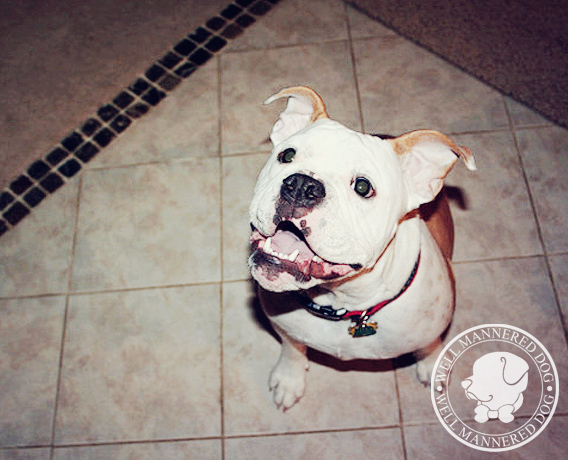
When it gets cold, wear your dog out inside.
Hide and Go Seek
- Place your dog in a sit/stay position.
- Go and hide.
- Happily call them to you!
- Celebrate their arrival!
You are playing hide and go seek, canine style! Make it easy at first. Hide in a room close to the dog’s stay in an obvious location. Progressively move farther away from the dog and hide in sneakier places. If your dog doesn’t have a strong enough stay to do this at the moment, get a partner. While you hide, have your partner enforce the “stay.” Once the dog is released to go find you, your partner should take that opportunity to hide. When your dog reaches you, your celebration of praise should be loud enough for your partner to hear. When you’re done praising, put the dog in a sit-stay to wait for your partner’s call.
Find It
You can turn the game of “Hide and Go Seek” into a game of “Find It” by training your dog to find an OBJECT rather than YOU. This lets them use their noses and forces concentration. This will cause an additional burn on their mental energy supply.
- Start with your dog in a Sit/Stay.
- Show them a treat or one of their kibbles.
- While they are watching, hide it in a very obvious location.
- Release them as you say “Find It!”.
- When they get to the lure, give them lots of praise!
As they improve, increase the difficulty by hiding the lure under a towel, or behind a door. When they find it, praise! Accelerate to locations in other rooms and in more difficult hiding spaces. If your dog begins to get frustrated, and cannot find the goal, make sure to slow down and go back to easier hiding spots for a few rotations to regain confidence.
Eventually, you can tie this game to any object: Toy, Shoe, Keys, etc by showing the dog an object, saying its name, and treating the dog several times. Keys! Treat. Keys! Treat. Then hide the keys. Give the dog the command “Find the Keys!” and watch them go to work. Remember, the slower the acceleration of difficulty and the more praise a dog gets during this process, the faster and better the dog will get at the game. Repetition and consistency are the keys to your success. If the dog is getting frustrated, or you are getting stressed, simply pause and return to your practice at a later time. It is a game. It should be fun!
When Your Dog Loves You Too Much
Separation Anxiety is often misdiagnosed in the canine world. Sometimes it is just boredom, or the dog becoming adventurous when given the opportunity. If your dog seems to follow you and stick to you like glue, and/or if destruction is happening within the first 20 minutes you are away, then you are probably dealing with some form of separation anxiety. Here are some things that you can do to help:
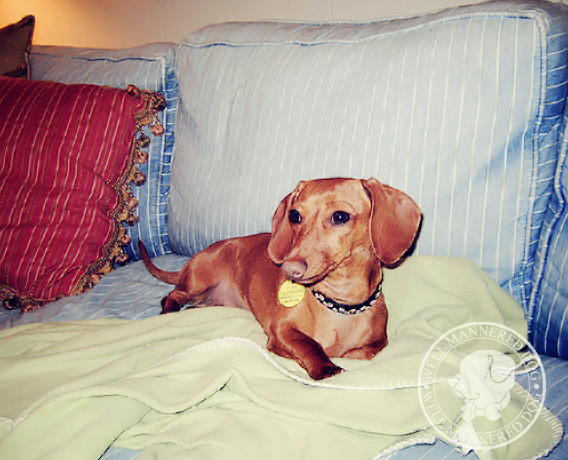
Dogs that get too attached to their owners sometimes suffer from separation anxiety.
- Keep your comings and goings neutral! Don’t make a big fuss at either time. This is one of the biggest changes you can make. It is definitely harder on the human than the dog. Your dog will not be offended! They will just learn that the moment you get home is not the greatest time ever. Wait a few minutes, then proceed to greet and play with your pet.
- Practice leaving with your normal cues (pick up your keys, grab your purse, put on your work shoes, etc.), then don’t leave. This will help desensitize your dog to your departures.
- Give your dog a hobby while you are gone. Stuff a Kong, leave treats around the house, utilize a feeding tube, or anything that will get your dog up, moving and eating. A dog that is eating is not a stressed dog.
- Leave your dog with an article of clothing that smells like you, such as an old t-shirt that you recently slept in. Even better, tie the shirt up into a big t-shirt ball.
- A tired dog is a good dog! Try to exercise your dog more both mentally and physically.
Still having issues? Contact me or call 843.569.3022. I once trained a dog that ate through the house (insulation, siding and all!) to find his owner at the community pool down the street. He became a happy, relaxed dog at home after training. If he can do it, any dog can!
Be Careful What You Feed Your Dog
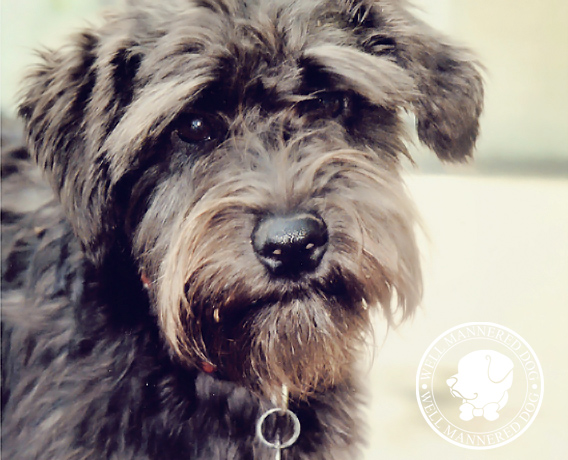
The cost of feeding your dog proper nutrition is far less than treating the side effects of bad nutrition.
The Costs of Improper Nutrition
Nutrition is the foundation for optimal health for pets as well as people. Pet food should be wholesome and nourishing. In order to be sure your pet is getting the proper nutrition, read the labels and check the ingredients. It is also very important to chose a pet food that uses high quality, “human grade” ingredients. This assures that the ingredients on the label are what is truly in the food.
Some of the side effects that can result from improper nutrition are:
- itchy red skin
- dandruff
- oily coat
- runny eyes
- chewing on paws
- red sore ears
Imagine eating the same diet day after day for your entire life… not very appetizing is it? Now, imagine that same diet lacking the vitamins and minerals needed for strong healthy bodies. Since we need good nutrition to stay healthy, it would not take long to become weak and sickly. As unhealthy as this sounds, this is what most of our pets experience their entire lives. As a result they are getting sicker and sicker.
Substandard Ingredients in Commercial Dog Food
Keep in mind that any ingredients that are not considered “human grade” are not subject to any FDA or other screening. Pet food has no federal inspection of ingredients. This means the ingredient list on most commercial dog foods is not truly accurate.
Meat by-products: The “by-products” from the meat, but not including meat: lungs, spleen, kidneys, brains, liver, blood, bone, intestines, none of which are fit for human consumption.
Meat meal: Meat meal can consist of just about any conceivable meat source. Even destroyed dogs and cats are rendered into meat meal for several name-brand animal foods.
Beet Pulp: Beet pulp is the dried residue from the sugar beet. It is a source of sugar and fiber. However, it can seriously bind a dog’s digestive tract.
BHT, BHA: Chemical preservatives such as BHT and BHA have caused many concerns when tested on laboratory animals.
Ethoxyquin: Ethoxyquin is a chemical preservative used to prevent spoilage in dog foods. It is a 1950’s Monsanto product manufactured and sold as a chemical for making rubber! It is listed as a pesticide by the U.S. Department of agriculture.
Unnecessary additions to dog food or treats:
Corn: Corn, used as a cheap filler and protein source. Corn can cause common allergies such as skin disorders, increased chewing on paws or ear infections.
Corn gluten meal: Corn gluten meal is by by-product after the manufacture of corn syrup or starch.
Wheat or Wheat Gluten: Used as a cheap filler and protein source. Also a high allergen for skin disorders, and ear infections.
What Should You Feed Your Dog
Avoiding the unnecessary ingredients above is a great start to better nutrition for your dog. There are good foods out there, you just have to be diligent in your search for the right one. One brand that I personally recommend is Life’s Abundance. You can read more about this food by clicking here.
© 2013 Well Mannered Dog Training Charleston, SC
TAGS: Dog Manners, Dog Socialization